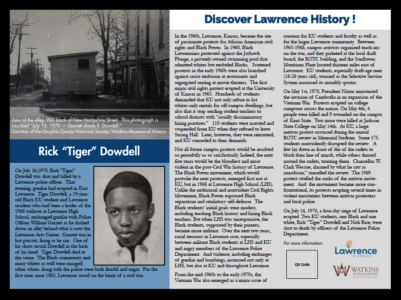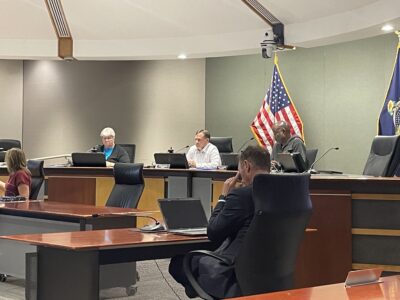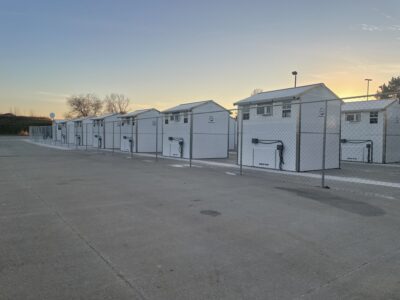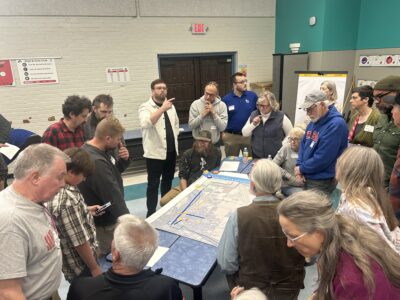Lawrence’s GIS team earns achievement award for sidewalk model that helps illustrate pedestrian demand

photo by: Provided by the City of Lawrence
The Geographic Information System team for the City of Lawrence was given a a Special Achievement award for its GIS work by the ESRI organization in San Diego in July. The employees were presented with the award are Darren Haag, Asset and Innovation Manager; Charles Myers, GIS Analyst; Jessica Mortinger, Transportation Planning Manager; and Micah Seybold, GIS Manager.
The Geographic Information System team for the City of Lawrence has earned a Special Achievement Award for its work on the sidewalk network model that is being used to prioritize the construction and repair of new sidewalks in the city.
Darren Haag, an asset and innovation manager with the GIS team, said that the award was given by the ESRI organization, which provides the software his team uses to about 800,000 different companies, organizations or municipalities.
Out of all those teams, Micah Seybold, the GIS manager for Lawrence, said their team was one of 200 groups to receive an award.
“It’s a good award and an honor to have it,” Seybold said.
In basic terms, GIS is a database that has mapping components to it, Seybold said. Once the various pieces of data are in the system, the team can use it just like a database of numbers and do things to visualize the data, with creating maps being a big help for the specific task of the city government.
The team won the award for the work it has done on its sidewalk network model, which adds in potential pedestrian demand and use. The model will be used to prioritize areas for sidewalk maintenance and reconstruction and is going to be an important way to prioritize projects as the city implements its 20-year, $103 million ADA Transition Plan.
Haag said the team created models of potential pedestrian routes from different houses in a city. They modeled the routes of someone walking from their house to a park, a school, a restaurant or a bus stop and aggregated the trips together to see how often walking routes would be used.
Haag said the team “weighted” those trips to see how likely it was that someone would make them; if it’s only a few blocks to a restaurant instead of a mile walk, that’s more likely a person would make that trip. Certain trips, like a walk to school, were also weighted heavier than something like a trip to a barber shop.
Once all that data came together, Haag said the team added a layer for populations that the city considers “transportation disadvantaged.” According to the city, being considered transportation disadvantaged includes a variety of factors like being a lower-income household, having a disability that affects mobility or not having a vehicle.
After the models were run — which took multiple days — Haag said they got an idea of how often sidewalks were used and therefore could “group together” the areas with the most use and give that information to the city to prioritize projects on those sidewalks.
Seybold said this model helps the city make decisions not based on prioritizing projects in areas with the loudest voices, but more on objectivity. The new model replaced a previous selection process that relied more on one-off requests instead of a sophisticated data set.
Haag said with all that information from the GIS, they can help paint a better picture to the rest of the city’s teams of where the most serious work should start, even with limited resources.
“We want to make sure the sidewalk that might have 200 people on it a day gets looked at before one that has two or three people on it,” Haag said.







